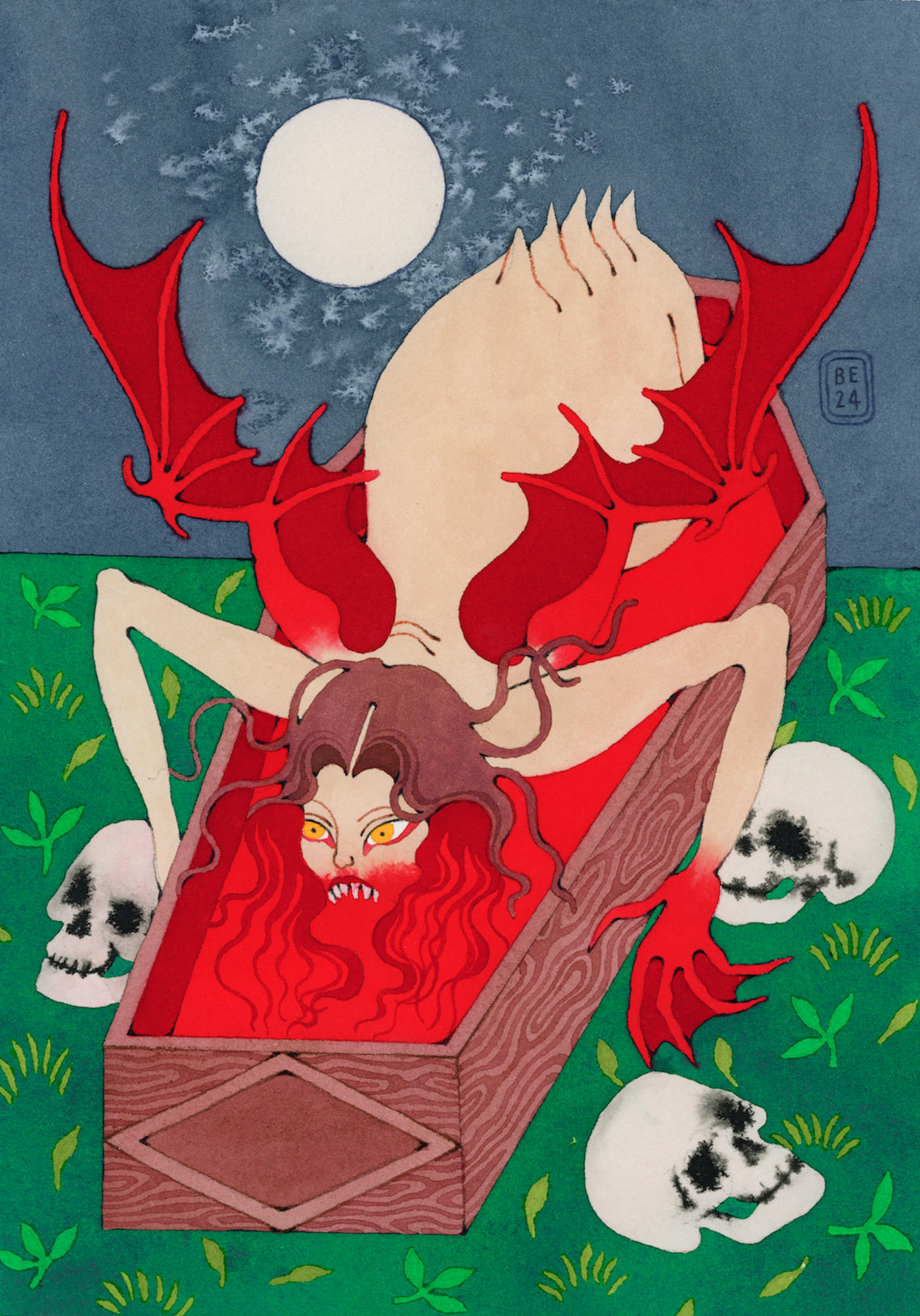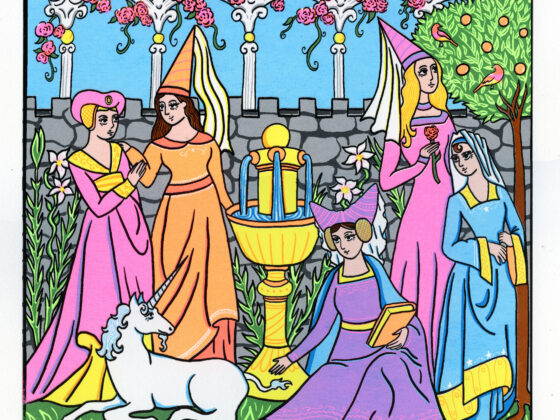BEBHINN EILISH DISCUSSES HER WORK AND PRACTICE IN THE CONTEXT OF MODERN MYTHOLOGY, HISTORY, AND A NEW CELTIC REVIVAL.

Evolution of Practice
I’ve always been an artist, of course not professionally, but ever since I was young, I have struggled to identify myself beyond being a creative. Thankfully, as a child, my mam nurtured my artistic ability, and, more importantly, never doubted my talent.
I got my degree in Graphic Design, and learned very valuable skills that enhance my practice. I’m very happy to be a self-taught artist; had I studied fine art, my practice could have evolved in a completely different way.
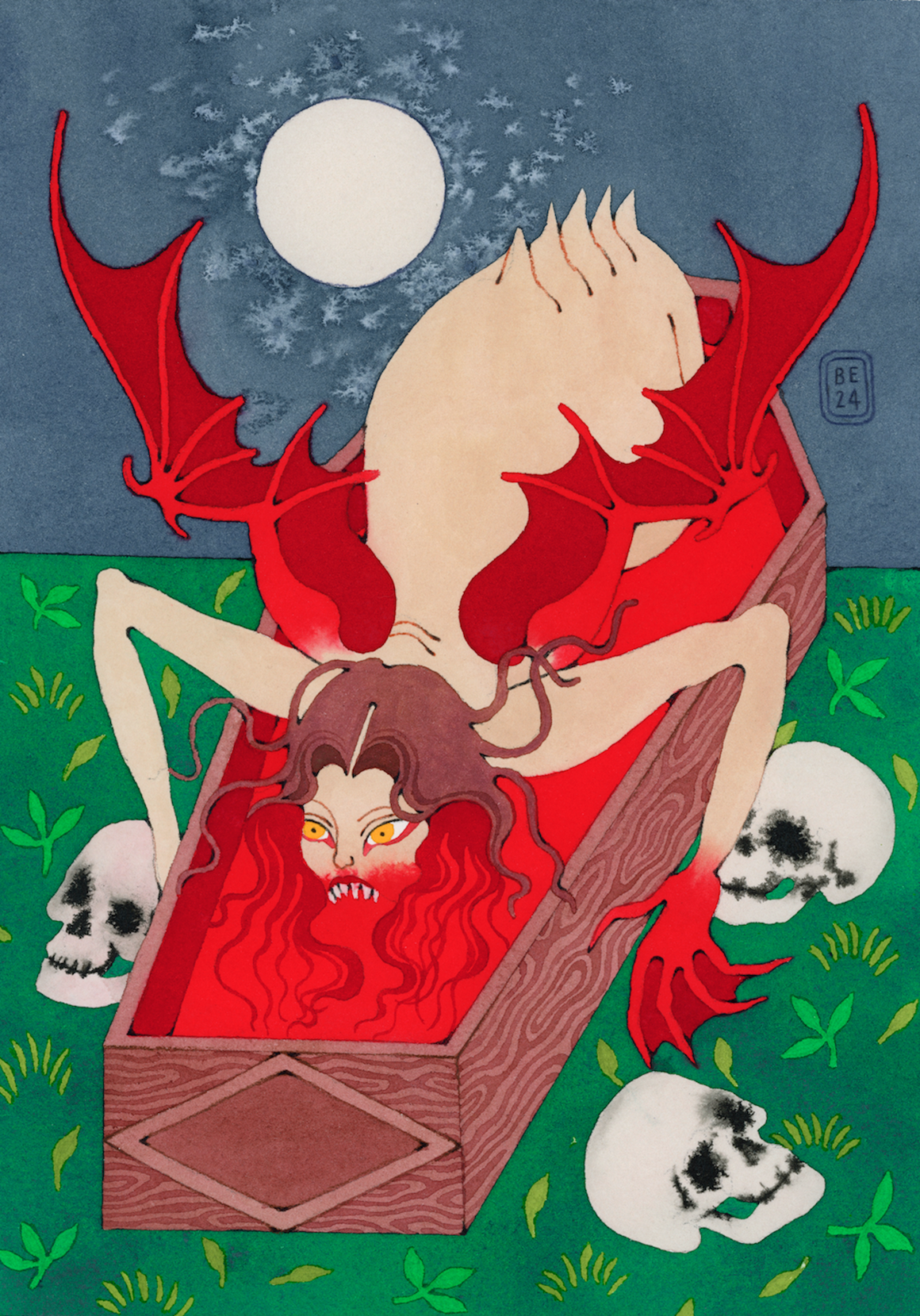
Although I always considered myself an artist, I didn’t get started as a painter until 2021 when I lost my mam. I was an unemployed recent graduate, amidst the pandemic, and had been my mam’s carer for years. I had lost my forever muse – the greatest love I’d ever known, and the only way I could begin to process and move through the grief was to paint. Over the last four years, my style, subject matter, skillset, and materials have changed countless times, and although they will continue to evolve, I finally feel like I have my vision as an artist. Over the last two years, my themes have stayed consistent: grief and death, cultural taboos surrounding women and the female body, myths and folklore, symbolism and iconography, and a lot of personal talismans. I have also ventured into silversmithing and performance art, and it has been interesting to see how my work translates across these mediums.
History, Folklore, and Mythology
Since I was young, I have loved Ireland’s folklore, mythology, and history. Tales of Ireland’s past, both mythological and factual, were read to me by my mam. She had a keen interest in Irish history and named me after Bé Binn inion Urchadh – the mother of Brian Boru, High King of Ireland. These stories ultimately ignited a curiosity in me that continues to grow. I love how storytelling allows us to connect with and enter a realm beyond our own. This is something I try to emulate in my work.
The symbolism in ancient Irish motifs, alongside the intricate and deeply fascinating customs surrounding death in prehistoric Ireland, are most influential to my practice, as they are deeply rooted in grief.
Ancient Myths for Today
In Irish folklore, a lot of these characters are written about in great detail, but not all are visually imagined to accompany these stories. I like the idea, just like when reading a book, that the reader builds an image of the characters and space in their minds eye – that’s what I enjoy doing with folklore.
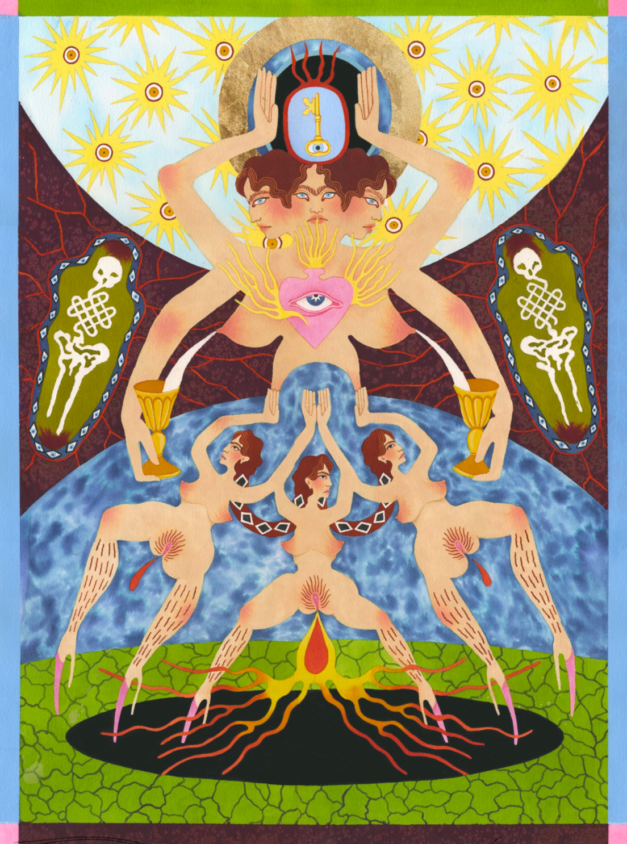
Folklore has and always will inspire both creatives and admirers. I think the interplay between past tales and contemporary art is extremely interesting and valuable, and will undoubtedly remain a catalyst for many artists for years to come.
I’d also like to mention how influential and inspirational Irish mythological figures can be on contemporary audiences. There’s an excellent piece written by Sharon Blackie for the Irish Times in 2019, on how Irish myth and folklore can inspire women to fight for ecological change, centred around one of my favourites, the Cailleach – a divine hag who fights the exploitation of the animals and the land.
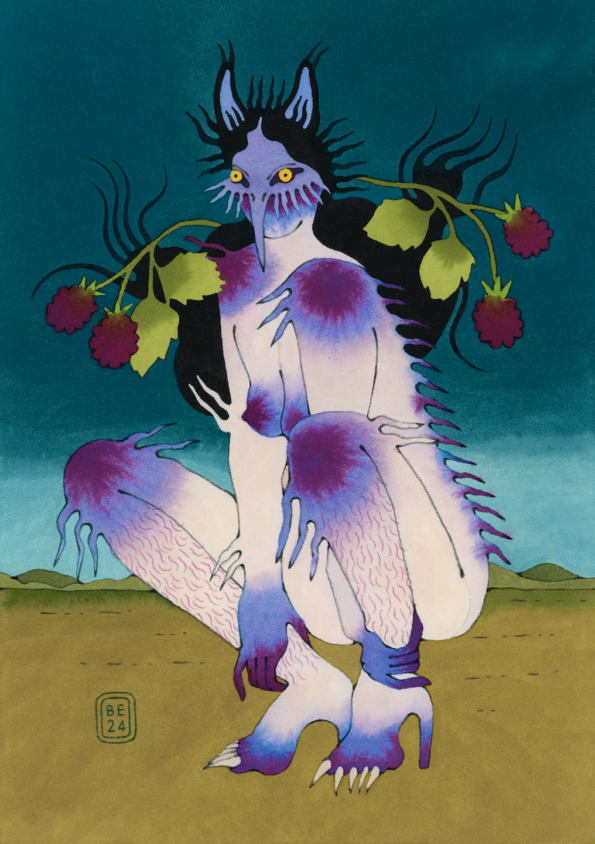
A New Celtic Revival
I’d like to think I’m amongst the many artists who are preserving our cultural heritage, by helping to ensure the continuation and appreciation of these rich cultural traditions. I have definitely connected many with Irish folklore by sharing my work on social media, particularly from my last ‘Inktober’ series, where I depicted four Irish mythical beasts, each week for the month of October. During this series, someone online asked if I had created these characters and stories – I only wish I was that genius. However, this has inspired me to consider what mythological beasts I would invent for the world today – perhaps the seed for a future project.
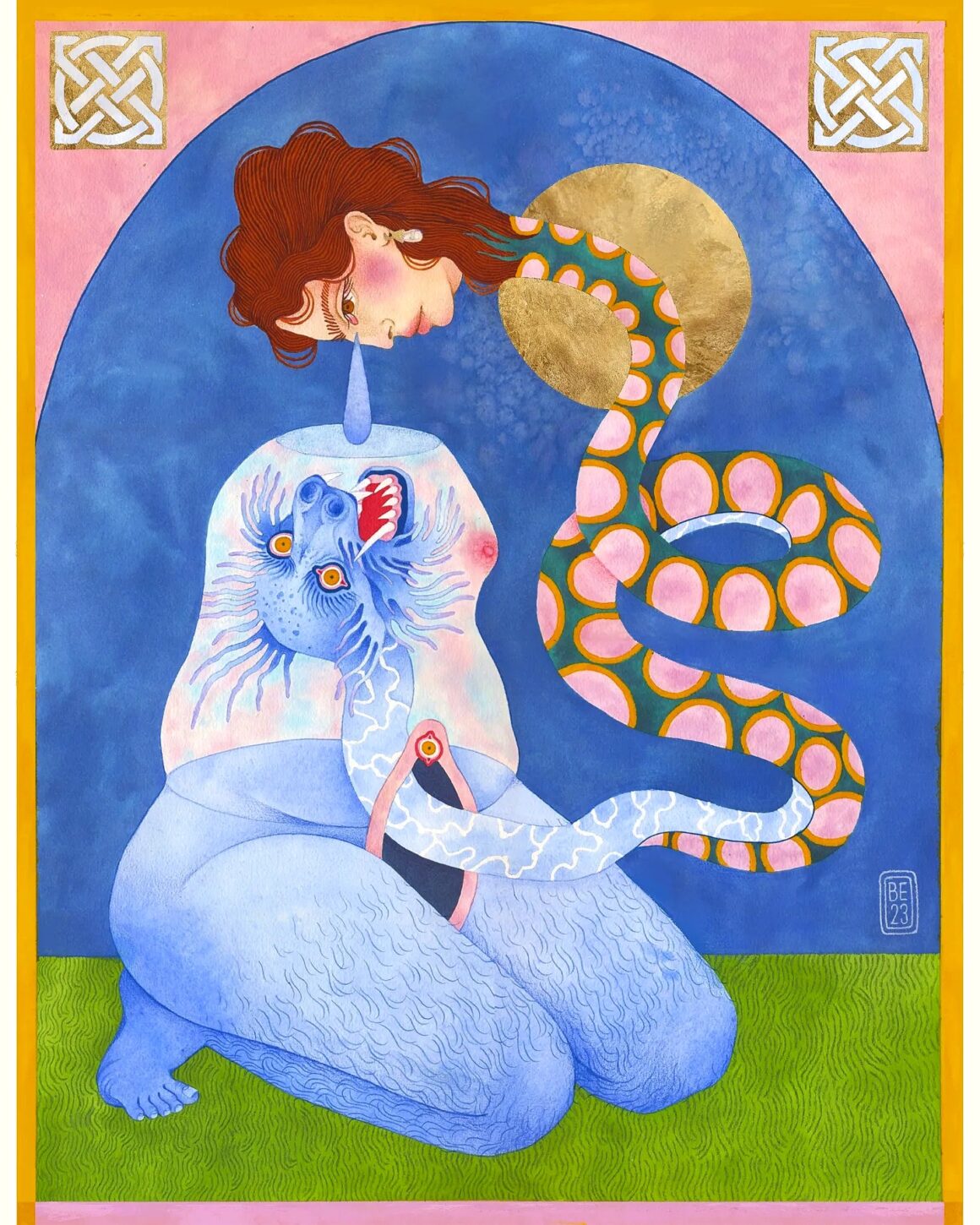
Women, History, and Myth
There are many reasons why I love Irish folklore, but most important to me is its portrayal of strange, strong, and terrifying women. In pre-Christian Ireland, the divine female almost entirely dominates these stories. Female gods and mythical beings show a culture where women were central to society, in positions of power, and were regarded as the essence of all life, like the goddess Danú – the mother goddess of all Celtic gods and of the Tuatha De Danann (an ancient, magical people of Ireland). These powerful women, such as Danú, and devious tricksters like the Púca, are muses for my work.
I feel that women in Irish folklore are depicted more honestly than in myths of other cultures I’ve familiarised myself with. They show women to be morally complex, and often speak to the darker side of femininity: the repressed power, their surfacing rage, and the repercussions that has on the environment. I am a big fan of the many acts of retribution in Irish folklore, like Macha cursing the men of Ulster with harrowing pains of childbirth in their hour of need as punishment for making her race with horses while pregnant. Or the Dearg Due rising from the dead to suck the life from every man to do her wrong. These folktales bring a consciousness to the many attributes and skills of the great might of the feminine.
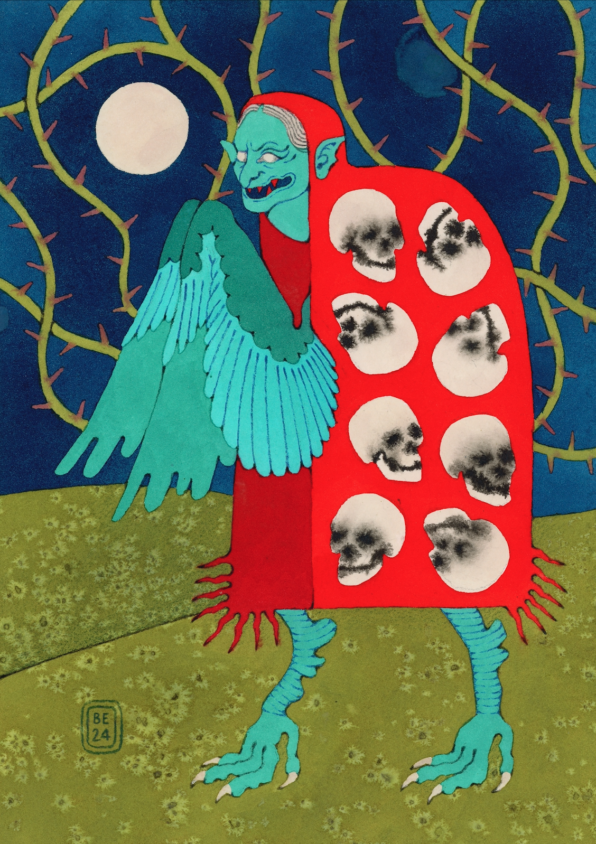
Merch and the Contemporary Artist
I’ve been really enjoying seeing other creatives express themselves in a way that invites, particularly new, audiences into the world of Irish design, but as an artist who primarily works as a painter, I have conflicting views on the topic – beyond environmental and consumerism concerns.
Merch is a great way for artists to diversify their income streams and stay financially sustainable. I’ve done it myself to stabilise my income, but I wish I didn’t have to depend on, or even consider these things. It’s beautiful and exciting – practically a walking promo of your work – and I’m honoured people like my work enough to wear it, but it can also feel a little underwhelming. My dream as an artist is to sustain myself through traditional revenue streams, like selling original paintings and prints, but unfortunately it’s not that simple. I feel forced to consider these avenues just to fund my work and feed myself. I don’t want to sound pessimistic, and I do love merch objectively, but sometimes it just feels like I am focusing too much on the marketability of my work, rather than what I want to create, and that just doesn’t sit right with me.
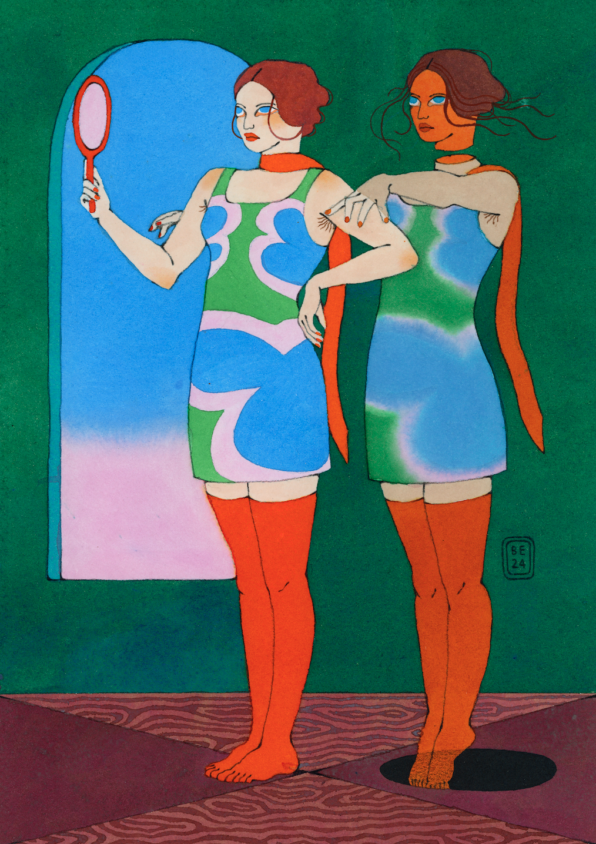
Coming Up
I am working on several different projects at the moment, some I’ve had on the back burner for years, and others I’ve been developing alongside. I think the reason I split my time between different projects that involve different mediums is to keep myself interested; if one is making me overwhelmed, I can easily switch to another, temporarily. A lot of my work is also very personal and I have to put myself in a place of emotional discomfort in order to pull from the source, so being able to refocus my energy elsewhere for a while is ideal. An example of this is my ongoing, and unseen, body of work entitled ‘I died with you’, which is an exploration of my own identity and self-discovery in my journey through grief after losing my mam. This body of work incorporates a lot of traditional ancient Irish motifs and is heavily influenced by practices surrounding death in Irish prehistory. I am also working on my ‘Etheric’ tarot deck, paper clay sculptures, and I’ve recently started jewellery school – I can’t wait to share what I’ve made.
Bebhinn Eilish is an artist and designer with an interest in grief, feminism, and Irish mythology.

